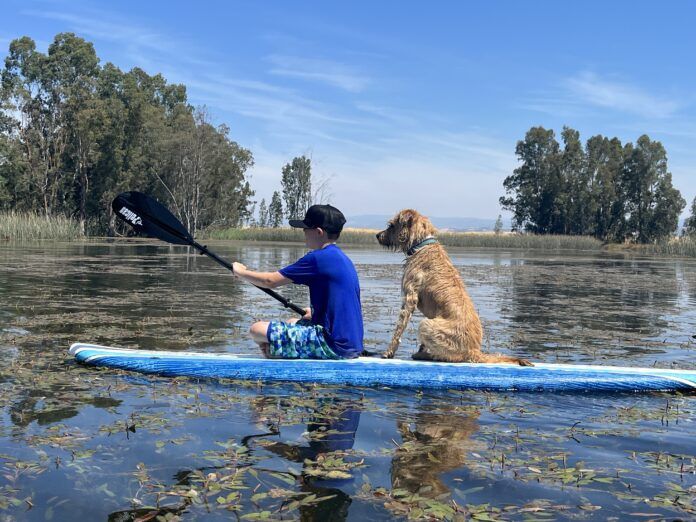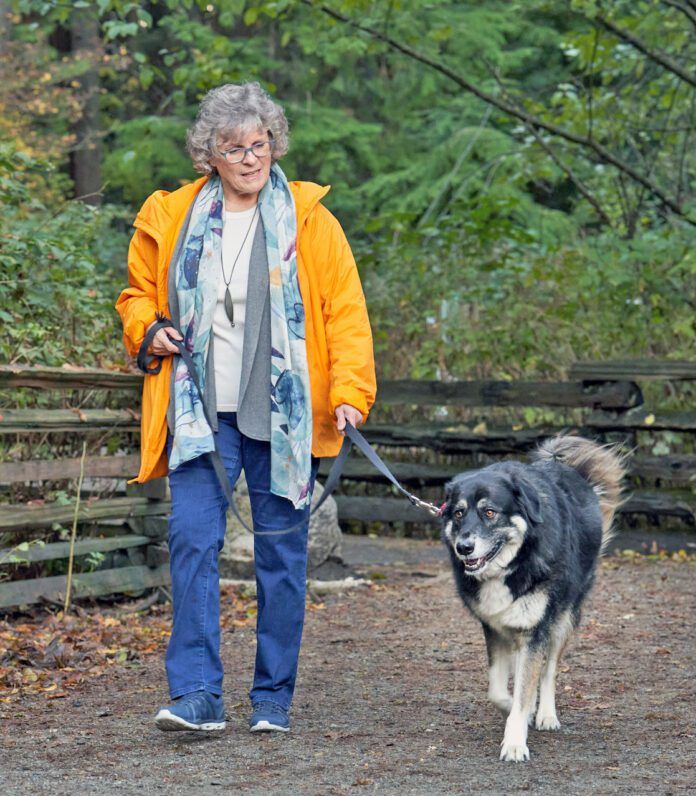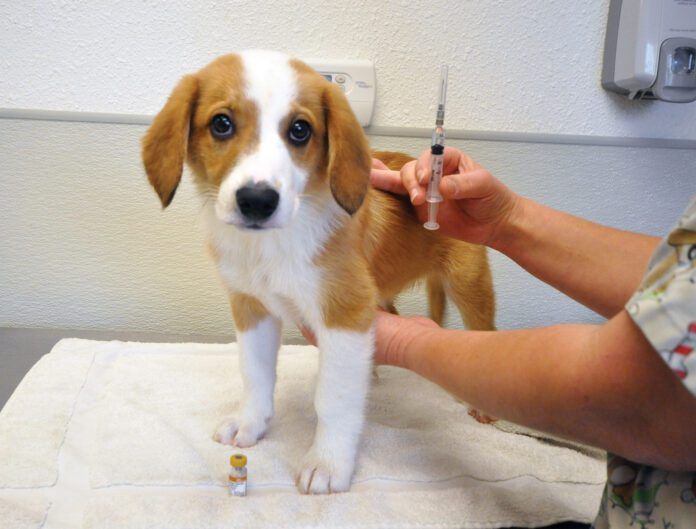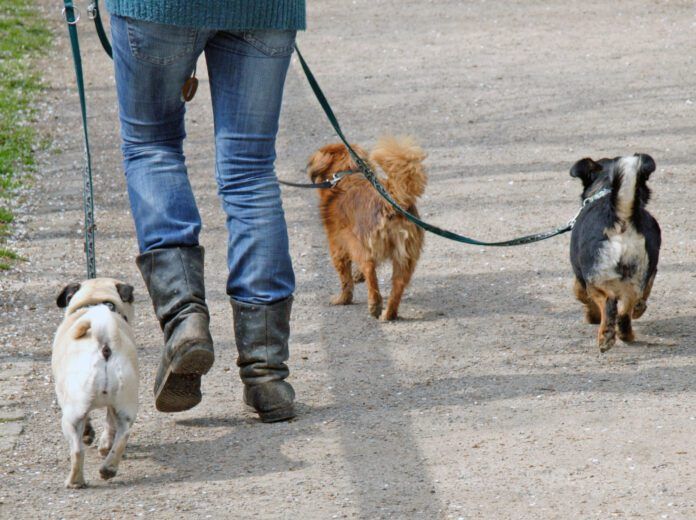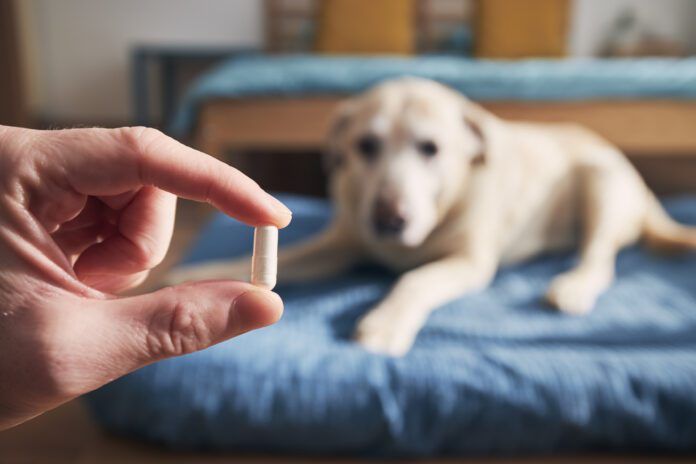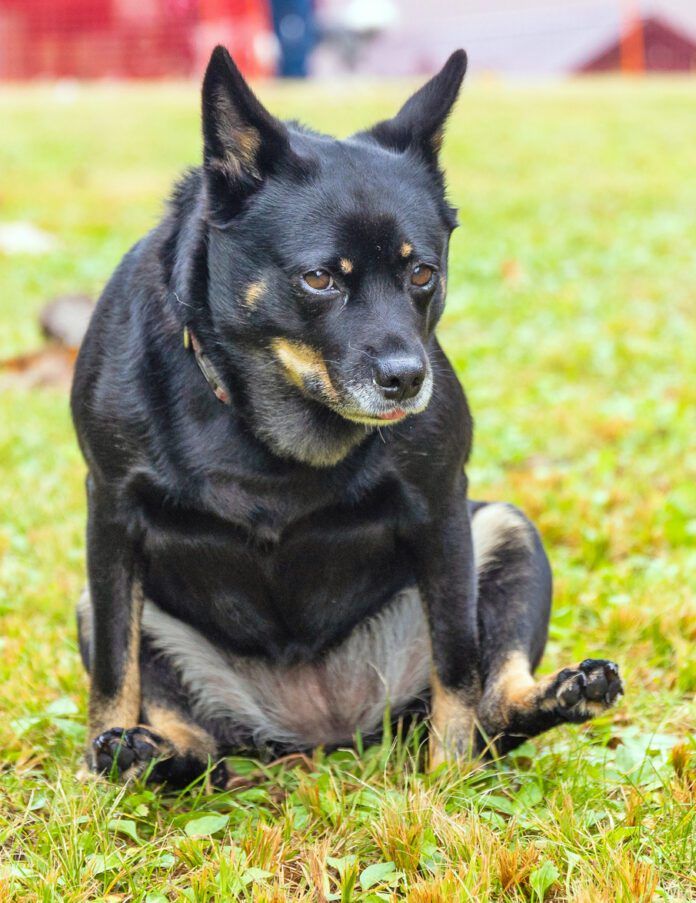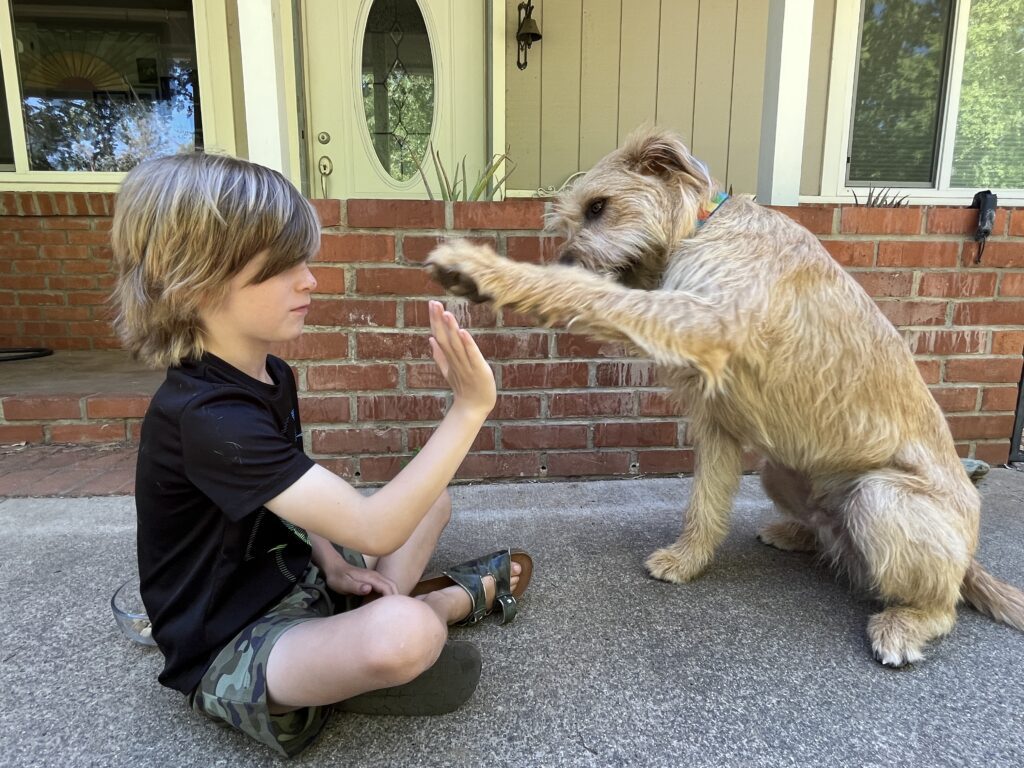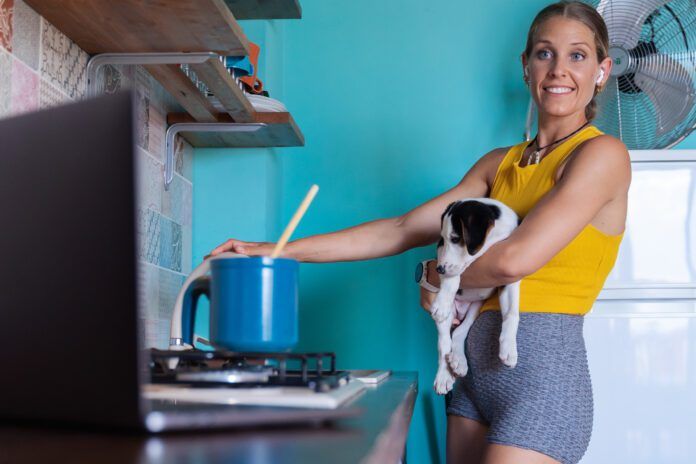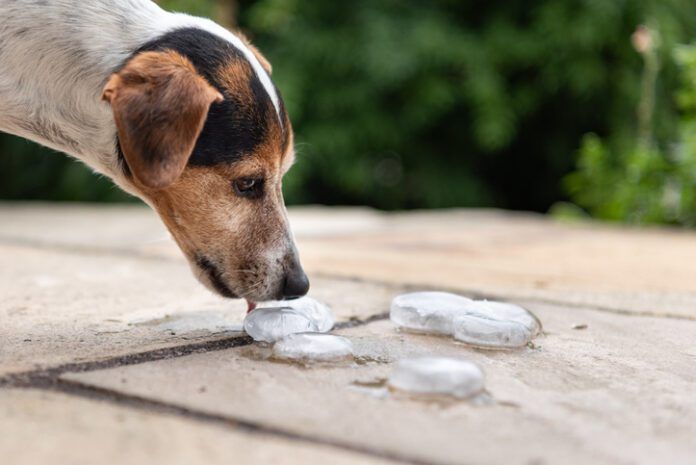I was looking through my Google photo storage, trying to find a picture to go with an article about a veterinary topic for WDJ. I had to take Woody to an emergency veterinary clinic earlier this summer, to check for and remove a foxtail from his nose. I thought I’d use a photo of Woody from the clinic for the article, but I couldn’t remember the date of the incident offhand, so I was just scrolling backward in time through this summer’s photos.
As I scrolled, I found myself smiling over several photos. Many were pictures of my dogs interacting with other dogs or people or each other. My dogs are comfortable when socializing – and, as someone who once owned a dog-aggressive dog, I love that about them. I love knowing that I can take them almost anywhere and not worry that they are going to start something with anyone else’s dog. They are also extremely compatible with each other. I often hear complaints from friends whose dogs don’t get along and need to be kept separated sometimes (or all the time), and I count my lucky stars that my dogs don’t require this sort of management.
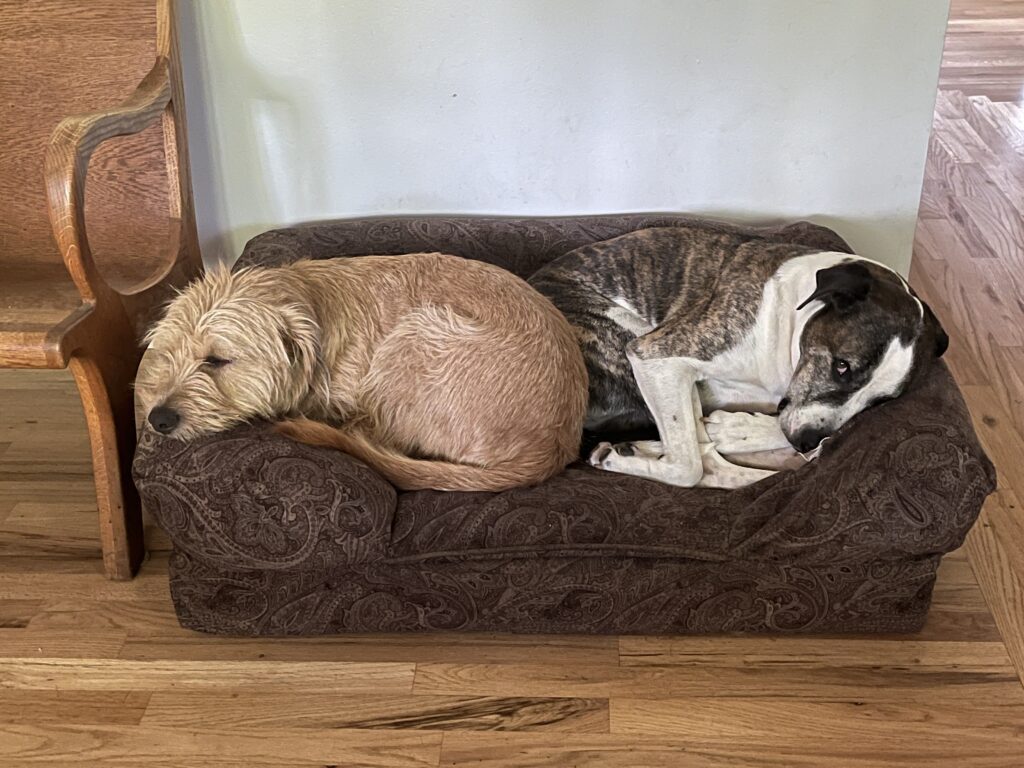
While Woody is my champion puppy-raiser, and can always be counted on to treat all puppies with patience and gentleness, no matter how pushy or needy those puppies are, I have to say I’m pretty impressed with Boone’s growing ability to tolerate puppy foolishness, too. When Boone was younger, he would mostly avoid any foster puppies that were around. His behavior and expression would resemble what you would expect of a teenaged boy when asked to look after a sticky, whiny toddler with a stinky diaper – “Ew! Gross! Get it away from me!” But as he has matured (he’s about a year and a half now), he will not only put up with the physical explorations of puppies upon his person, he now tries to engage them with toys and play. He’s not quite as careful as Woody, and sometimes he gets excited and his exuberance alarms pups, but he hasn’t hurt one with his roughhousing.
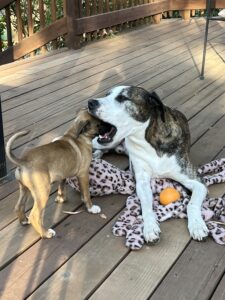
Their respective modes of playing with puppies is echoed in how they have coped with spending time with my grandsons, both the one who loves dogs and the one who doesn’t care that much about them. Woody is always glad to see the kids arrive, happy to jump on their beds to wake them in the morning, ride in the back seat with them, and accompany them wherever they go on our two-acre property. Boone isn’t quite as much of an ardent fan, but over the course of the summer, he grew more and more comfortable with the erratic movements of active boys and more anticipatory of the chaotic fun that might break out at any moment around them – enough so that he was effectively counter-conditioned to their presence. At the beginning of summer, he looked dismayed and apprehensive when a boy ran shouting through the house, wielded a stick like a sword, threw a football, or swung on the rope swing Boone had come to think of his own. But today, if a kid jumps up from the table for some spontaneous fun, Boone does, too – with a sparkle in his eye and a wagging tail. “Are we going to go outside? Do you want to play tag? Are we going to hunt for squirrels? Let’s do this!” he seems to say.
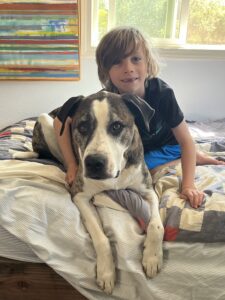
I frequently use my dogs as models. They are frequently asked to hold their positions in a solid “stay” or a patient “wait” while I take pictures of them. Sometimes it’s for an article for the magazine. Sometimes it’s because I think the photo I’m taking might be pretty enough or interesting enough for the next year’s WDJ calendar. Sometimes, they are just my muses, and I just enjoy seeing them through the lens of my camera or cell phone. I always “pay” them for their modeling work, so they are almost always willing to stand still for me as I change angles and f-stops, trying to get the light just right.

I don’t have a photo of this, but one of the things I appreciate most about my dogs is that they are comfortable staying in places without me. My husband and I did a lot of traveling this summer, spending long weekends at several out-of-town weddings and even longer and more numerous camping trips. Fortunately, my dogs love staying with my friend Leonora and her tiny dog Samson, and are equally comfortable staying at my sister Pam’s house, even though Pam’s three small dogs are possessive of Pam and of their voluminous array of toys. Dog-toy-envy aside, I don’t have to worry about my big dogs hurting any of their small friends or destroying anyone’s home. They are good houseguests! And thank goodness, or I wouldn’t be able to have as much fun or relax about their well being while traveling.
What do you especially appreciate about your dogs? Share what you love about them with the rest of us!


